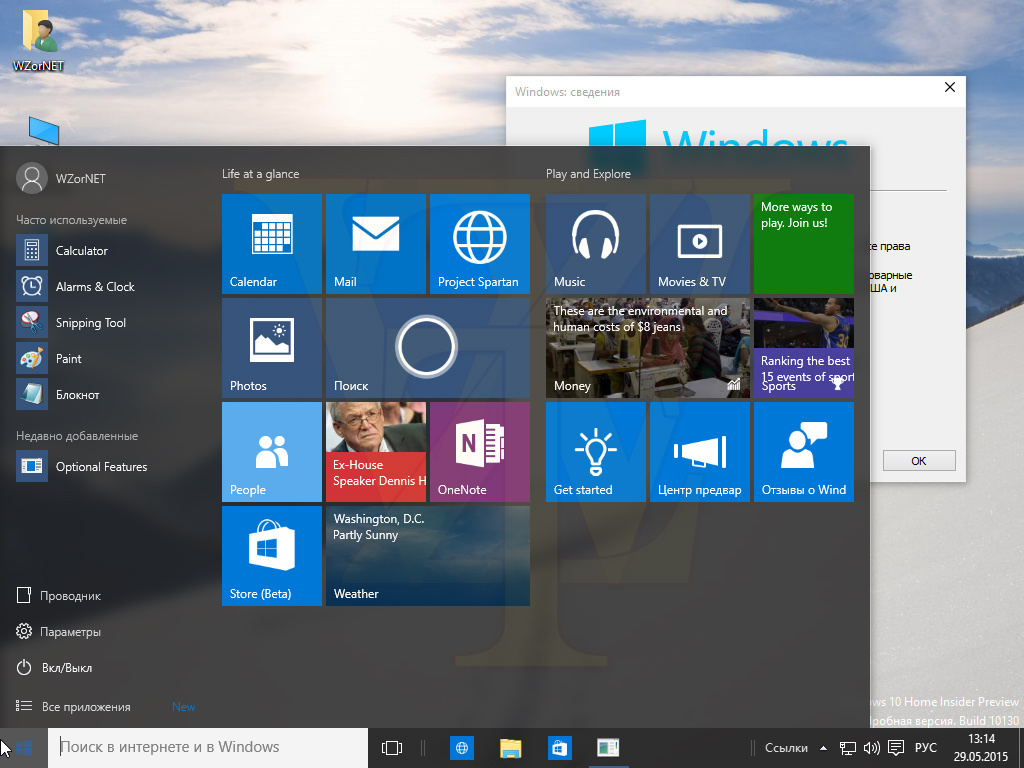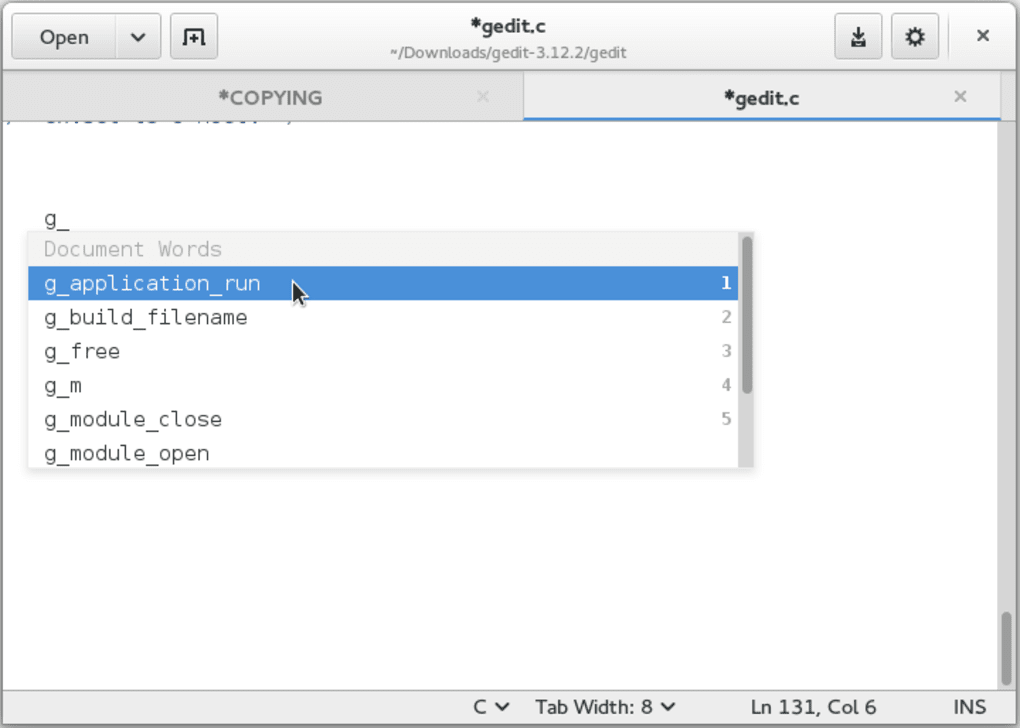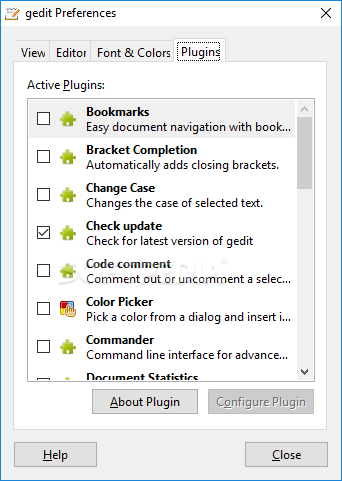


tab_width: a whole number defining the number of columns used to represent a tab character.


When set to tab, the value of tab_width (if specified) will be used.
#GEDIT DOWNLOAD FOR WINDOWS WINDOWS#
(note the trailing dot), which Windows Explorer will automatically rename to. editorconfig file within Windows Explorer, you need to create a file named. Properties from matching EditorConfig sections are applied in the order they were read, so properties in closer files take precedence.įor Windows Users: To create an. editorconfig files will stop if the root filepath is reached or an EditorConfig file with root=true is found.ĮditorConfig files are read top to bottom and the most recent rules found take precedence. editorconfig in the directory of the opened file and in every parent directory. When opening a file, EditorConfig plugins look for a file named. indent_style = space indent_size = 2Ĭheck the Wiki for some real-world examples of projects using EditorConfig files. end_of_line = lf insert_final_newline = true # Matches multiple files with brace expansion notation Refer to the column entitled "supported on" to determine to which operating system the policy setting applies.Root = true # Unix-style newlines with a newline ending every file It does not mean that the setting applies only to Windows Server 2012 R2 and Windows 8.1. Status: A "New" in this column means that the setting did not exist prior to Windows Server 2012 R2 and Windows 8.1.Active Directory Schema or Domain Requirements: A "Yes" in this column means that you must extend the Active Directory schema before you can deploy this policy setting.Logoff Required: A "Yes" in this column means that the Windows operating system requires the user to log off and log on again before it applies the described policy setting.Reboot Required: A "Yes" in this column means that the Windows operating systems requires a restart before it applies the described policy setting.The Administrative Template spreadsheet contains three columns that provide more information about each policy setting's behavior related to reboots, logoffs, and schema extensions. For example, to view policy settings that are available for Windows Server 2012 R2 or Windows 8.1, in the Administrative Template worksheet, click the drop-down arrow next to Supported On, and then click At least Microsoft Windows Server 2012 R2 or Windows 8.1. To view a specific subset of data, click the drop-down arrow in the column heading of cells that contain the value or combination of values on which you want to filter, and then click the desired value in the drop-down list. In addition, you can click Custom in the drop-down list of any of the column headings to add additional filtering criteria within that column. You can use the filtering capabilities that are included in this spreadsheet to view a specific subset of data, based on one value or a combination of values that are available in one or more of the columns.


 0 kommentar(er)
0 kommentar(er)
